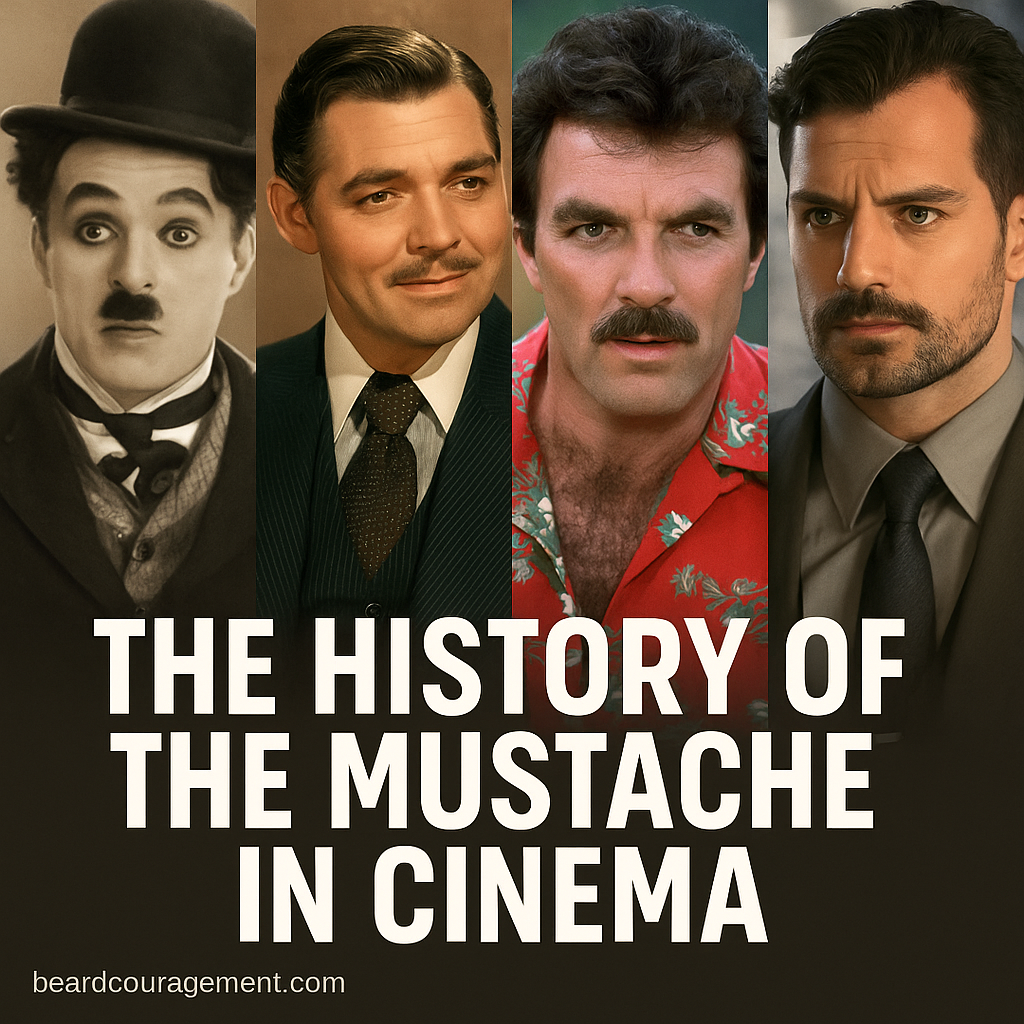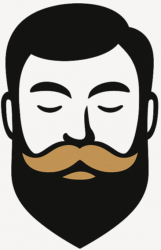
The mustache has been a defining feature of some of cinema’s most iconic characters — from silent-era villains to modern action heroes. It’s more than a style choice; it’s a visual shorthand for personality, power, and even rebellion.
Throughout film history, the mustache has shifted from symbol to statement — mirroring the changing ideals of masculinity, charm, and character. Let’s explore how the mustache has evolved on the big screen, era by era.
The Silent Film Era: The Birth of Expression
In early cinema, before dialogue and sound, actors relied heavily on appearance to express emotion and intent. The mustache became a visual cue — instantly communicating a character’s personality.
The classic villain’s curled mustache became a symbol of cunning and mischief, made famous by actors like Erich von Stroheim. Meanwhile, stars like Charlie Chaplin gave the mustache a humorous twist with his now-legendary toothbrush style, turning simplicity into timeless character identity.
The silent era set the foundation: a mustache could tell a story without saying a word.
The Golden Age of Hollywood: The Gentleman’s Signature
In the 1930s and 1940s, the mustache matured into a mark of refinement. Smooth-talking leading men like Clark Gable, Errol Flynn, and Ronald Colman turned the pencil-thin and tapered styles into emblems of charm and sophistication.
These mustaches weren’t just fashionable — they defined the golden standard of masculinity. They conveyed confidence, suavity, and self-assurance, qualities audiences adored in Hollywood’s golden heroes.
The 1950s–1960s: The Decline and Rebellion
As the mid-century arrived, clean-shaven faces took over the screen. The post-war ideal of discipline and order left little room for the mustache. Actors like Gregory Peck and Cary Grant popularized smooth, polished looks that matched the societal shift toward modern conservatism.
But rebellion was brewing. By the late 1960s, mustaches made a bold comeback — this time representing independence and counterculture. Burt Reynolds, Sean Connery, and Peter Sellers revived the mustache’s edge, turning it from a relic into a symbol of cool defiance.
The 1970s–1980s: The Power Era
No decades embraced the mustache quite like the 1970s and 1980s. This was the age of swagger, confidence, and unmistakable character.
From Tom Selleck’s iconic Magnum P.I. mustache to Burt Reynolds’ trademark style, the mustache became a badge of dominance and charisma. It wasn’t just an accessory — it was the defining feature of an entire cinematic identity.
In this era, mustaches embodied power, individuality, and effortless masculinity. Whether in action films, westerns, or comedies, they represented the boldness of men who led with presence.
The 1990s–2000s: The Fade and Reinvention
As minimalism and “clean-cut” aesthetics dominated the 1990s, the mustache once again took a backseat. Shaving commercials ruled, and cinematic heroes often sported bare faces.
However, directors and character actors still used mustaches to differentiate roles — especially in period films or eccentric characters. Think of Daniel Day-Lewis in Gangs of New York or Johnny Depp’s Captain Jack Sparrow, whose mustache helped define quirky, layered personas.
By the early 2000s, the mustache wasn’t gone — it was evolving.
Modern Cinema: The Mustache Returns with Meaning
Today’s mustaches carry depth and diversity. Actors use them to define everything from heritage to humor.
- Henry Cavill’s mustache in Mission: Impossible – Fallout symbolized rugged maturity.
- Pedro Pascal’s 1980s-inspired look in Narcos channeled authority with nostalgia.
- Chris Evans’ vintage mustache in The Gray Man reintroduced a suave, villainous charm to the modern action hero.
In contemporary cinema, the mustache is a statement again — one of authenticity, individuality, and character strength. It tells us who a man is before he speaks.
What the Mustache Represents Today
More than a style, the cinematic mustache now reflects transformation. It can convey depth, confidence, humor, or rebellion — depending on the story it’s in.
It bridges past and present, reminding us that while trends change, expression never goes out of style.
Whether it’s the meticulous villain’s curl or the effortless scruff of a modern antihero, the mustache continues to play its timeless role: defining the man behind the face.
